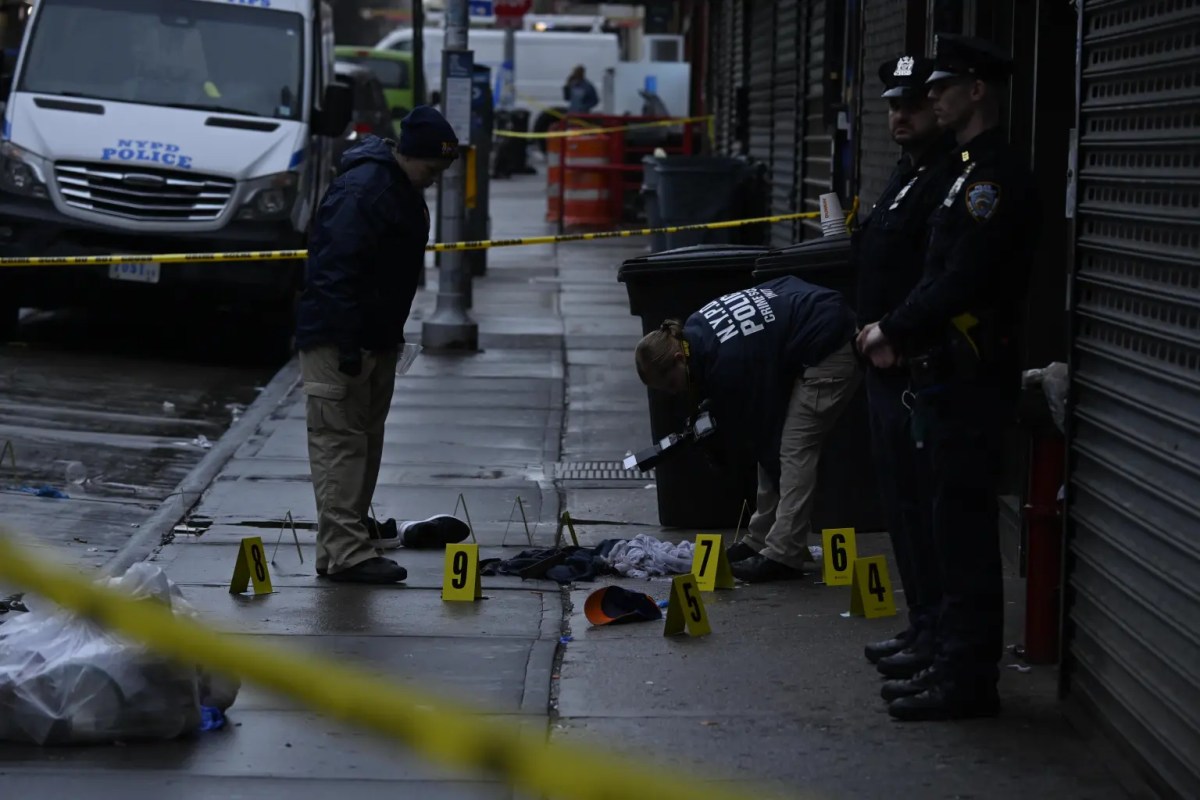Photographer Arlene Gottfried loved the New York City landscape and all the characters that inhabited it.
Her stirring black-and-white street portraits from the 1970s and 1980s are not only important artwork but vital documents of a gritty and carefree city that is now better groomed but some would argue less fun.
One year after she lost her battle with cancer, Gottfried’s 2008 book “Sometimes Overwhelming” is being released in paperback this month.
It features an eclectic collection of powerful and often amusing images: a fully-clothed Hasidic man standing next to a nude bodybuilder on a beach in Riis Park, a couple snuggled under the Coney Island boardwalk and a fire-eater honing his skills in the men’s room of a disco.
“She was in love with that old New York,” said comedian Gilbert Gottfried, Arlene’s brother. “She didn’t criticize what she saw. She didn’t look down on it. She had an affection for the people she photographed.”
Karen Gottfried, Arlene’s sister, said she believes the paperback version of the book will make it more accessible and affordable to a larger audience of fans and introduce some new people to her work.
She said her sister loved wandering outside their Brooklyn home, exploring local neighborhoods and into the Lower East Side of Manhattan with her camera in hand.
“She felt very comfortable going into neighborhoods that some people would call a ghetto at the time,” Karen Gottfried said.
Arlene also had an eye for the quirky and unusual scene. Karen, who was often with her sister when she took photos, said she missed the moment in 1980 that led to the famous Riis Park photo.
“She told me she saw this fully-clothed Hasidic man at the nude part of the beach and was taking his photo when a bodybuilder walked up and said ‘Take my picture — I’m Jewish too.’”
Other memorable subjects included a young child dressed as Gene Simmons from “Kiss” for the 1978 Village Halloween Parade and a large hound commanding a Coney Island arcade game.
Arlene photographed what she loved and ended up documenting history, a New York that is almost completely gone, said Gilbert Gottfried.
“When I first moved into the city and was living on Avenue A, people were like ‘Are you insane living there?’ and if you went to Avenue B and Avenue C, you were taking your life in your hands,” Gottfried recalled. “Now it’s all boutiques and coffee shops and luxury apartments.”
Many people would cross the street rather than come face to face with some of Arlene’s subjects, he said.
“She didn’t,” Gottfried said of his sister. “She was open. Something would catch her eye and she wouldn’t think twice about it. She would run over and start snapping pictures.”
Photographer and close friend Kevin Downs called Arlene Gottfried “a major influence” on his own work.
“She was a true documentary photographer,” he said. “She was shy, but when she was holding a camera, she would just walk up to you. It was very ‘in your face’ and just so good.”
Gilbert Gottfried said it was “surprising and satisfying” to see his sister’s work receive the recognition it deserves.
“She herself used to say ‘They’ll notice me when I’m dead,’” he recounted.
Arlene Gottfried published several books of her work and later in life found joy as a gospel singer after joining a group she had photographed.
She is also featured in the 2017 documentary about her brother’s career and family titled “Gilbert.”
Gottfried said he and his wife were recently walking down a city street and spotted two homeless people, one helping the other stand up.
“My wife turned to me and said ‘That’s an Arlene photo,’ and I thought that’s it exactly,” he said.

















